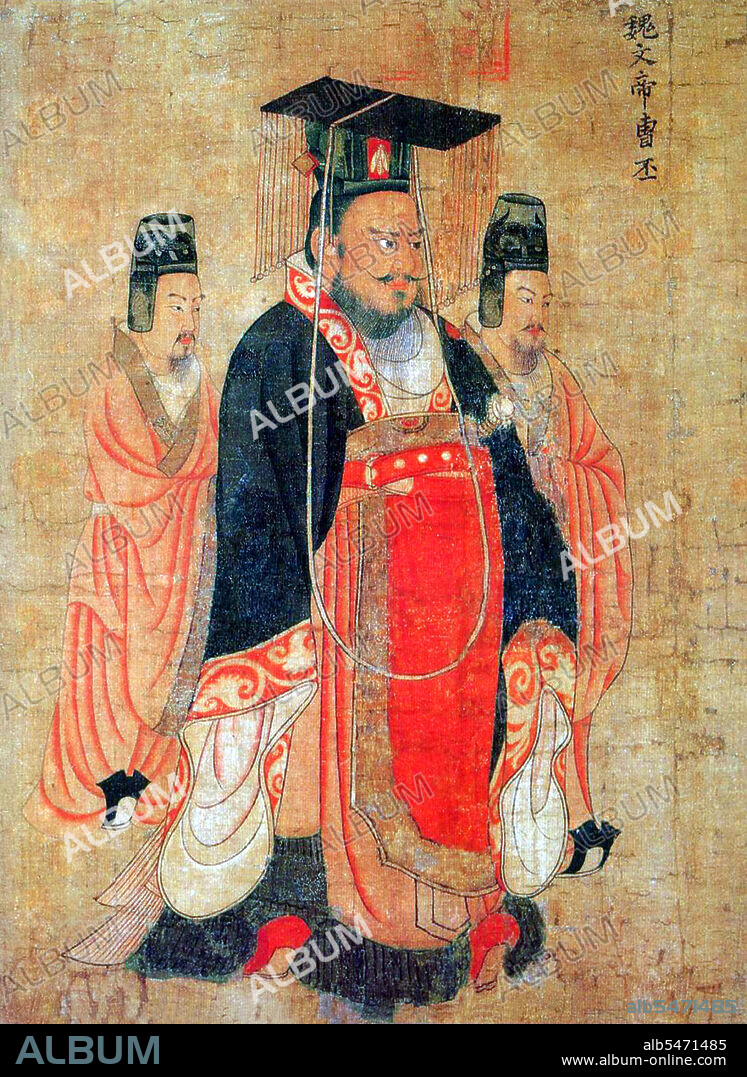alb5471485
China: Emperor Wen of Wei (187–226) from the 'Thirteen Emperors Scroll' painted by Tang Dynasty court painter Yan Liben (600-673).

|
Ajouter à une autre Lightbox |
|
Ajouter à une autre Lightbox |



Avez-vous déjà un compte? S'identifier
Vous n'avez pas de compte ? S'inscrire
Acheter cette image

Titre:
China: Emperor Wen of Wei (187–226) from the 'Thirteen Emperors Scroll' painted by Tang Dynasty court painter Yan Liben (600-673).
Légende:
Voir la traduction automatique
Cao Pi (187 – 29 June 226), formally known as Emperor Wen of Wei, was the first emperor of the state of Cao Wei during the Three Kingdoms period of Chinese history. Born in Qiao County, Pei Commandery (present-day Bozhou, Anhui), he was the second son of the late Han Dynasty warlord Cao Cao. In 220, Cao Pi forced Emperor Xian, last ruler of the Han Dynasty, to abdicate and proclaimed himself Emperor of Wei. Cao Pi continued his father's war against the rival states of Shu Han and Eastern Wu but was unsuccessful. Unlike his father, he concentrated most of his efforts on his home country, which prospered under his rule. Yan Liben (Wade–Giles: Yen Li-pen, c. 600-673), formally Baron Wenzhen of Boling, was a Chinese painter and government official of the early Tang Dynasty. His notable works include the Thirteen Emperors Scroll and Northern Qi Scholars Collating Classic Texts. He also painted the Portraits at Lingyan Pavilion, under Emperor Taizong of Tang, commissioned in 643 to commemorate 24 of the greatest contributors to Emperor Taizong's reign, as well as 18 portraits commemorating the 18 great scholars who served Emperor Taizong when he was the Prince of Qin. Yan's paintings included painted portraits of various Chinese emperors from the Han Dynasty (202 BC-220 AD) up until the Sui Dynasty (581-618) period.
Crédit:
Album / Pictures From History/Universal Images Group
Autorisations:
Modèle: Non - Propriété: Non
Questions sur les droits?
Questions sur les droits?
Taille de l'image:
3600 x 4938 px | 50.9 MB
Taille d'impression:
30.5 x 41.8 cm | 12.0 x 16.5 in (300 dpi)
Mots clés:
ART (CATÉGORIE) • ART • ART, PEINTURE • ASIE • ASIE, CONTINENT • CHINE • CHINOIS • CHINOISE • CONTINENT ASIE • EMPEREUR • EMPEREURS • HISOIRE • HISTOIRE • MONARCHIE • PEINTURE • ROI • ROYAUTÉ • SOUVERAIN EMPEREUR • TABLEAU • TABLEAUX • TITRE, EMPEREUR
 Pinterest
Pinterest Twitter
Twitter Facebook
Facebook Copier le lien
Copier le lien Email
Email
